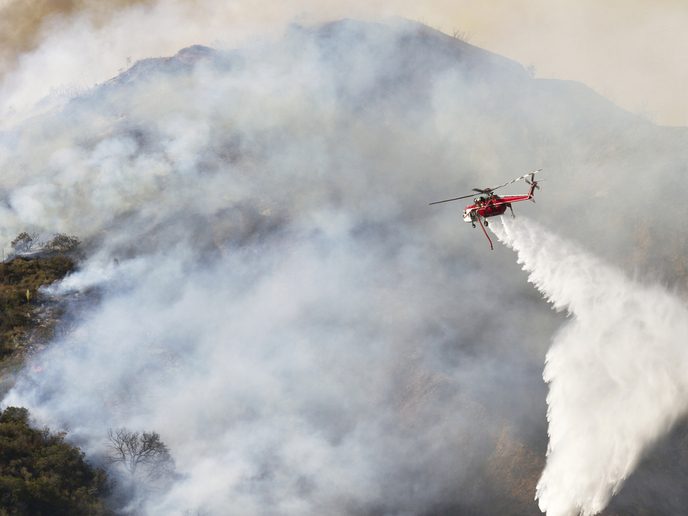New scooping device speeds up aerial response to forest fires
Each year, forest fires add billions of metric tonnes of the greenhouse gas CO2 to the atmosphere(opens in new window), thereby contributing to global warming and climate change. They are also directly responsible for hundreds of fatalities every year as well as hundreds of thousands of premature deaths due to smoke inhalation(opens in new window). Furthermore, the financial damage runs into hundreds of billions of euros. The EU-funded SCODEV(opens in new window) project addressed the threat posed by forest fires by developing an inflight water-intake or ‘scooping’ device to increase the effectiveness of firefighting aircraft. “The device allows non-amphibious aircraft to scoop water from the sea, a lake, river or canal flying at an altitude of 10 to 15 m and drop it on forest fires at an average rate of 5 times per hour,” says project coordinator Jacobus Benedik. Currently, non-amphibious aircraft have to land at an airport to refill once they have deposited their load of water, hence they only make one drop per hour. “The SCODEV scooping device aims to increase the frequency at which the aircraft deposits water, thereby improving its effectiveness in helping to prevent the fire from spreading out of control,” Benedik explains.
Rigorous testing
Researchers carried out force analysis, computer simulations, boat tests with half-scale models and helicopter tests with full-scale prototypes. They also conducted aerial and hydrodynamical behaviour tests. In addition, trials with an S-64 heavy-lift helicopter will be undertaken as will extensive flight tests with a Spartan C-27J fixed-wing aircraft to gain an Airworthiness Certificate from the European Union Aviation Safety Agency and the United States’ Federal Aviation Administration. For the Airworthiness Certificate to be awarded project partners will demonstrate that SCODEV can scoop water in a safe manner, maintaining the balance and stability of the aircraft. “We show this is feasible by using helicopters, which can use the device to scoop up water first at lower speeds and then accelerate to higher speeds,” notes Benedik. During these tests, researchers monitor and register speed, height, volume and loads on the helicopter. “There is always a chase helicopter flying at 100 m distance for guidance and video registration. Aircraft cannot fly slower than 130 knots (stall speed) and test pilots need evidence that it is safe to penetrate water at 130 knots,” comments Benedik.
Improved worldwide capacity
The consortium also determined that, worldwide, another 500 military (or even civil) transport aircraft can be mobilised in case of forest fires using a roll-on roll-off cargo platform with SCODEV and a holding tank mounted on top of this platform. Project partners are developing the platform, which can be shifted inside military aircraft in less than 1 hour. Prior to this, the aircraft is modified with a cabin pressure-proof hatch and the necessary cabling. SCODEV can be mounted on the loading floor of any airtanker. “It consists of a reel, a hose with the scooping device at the end, the launch and capture mechanism, a connection to the tank with a high-speed filling system, the applications and a control panel with video screens to be operated by the co-pilot. A passive and an active safety provision are included,” Benedik points out.







